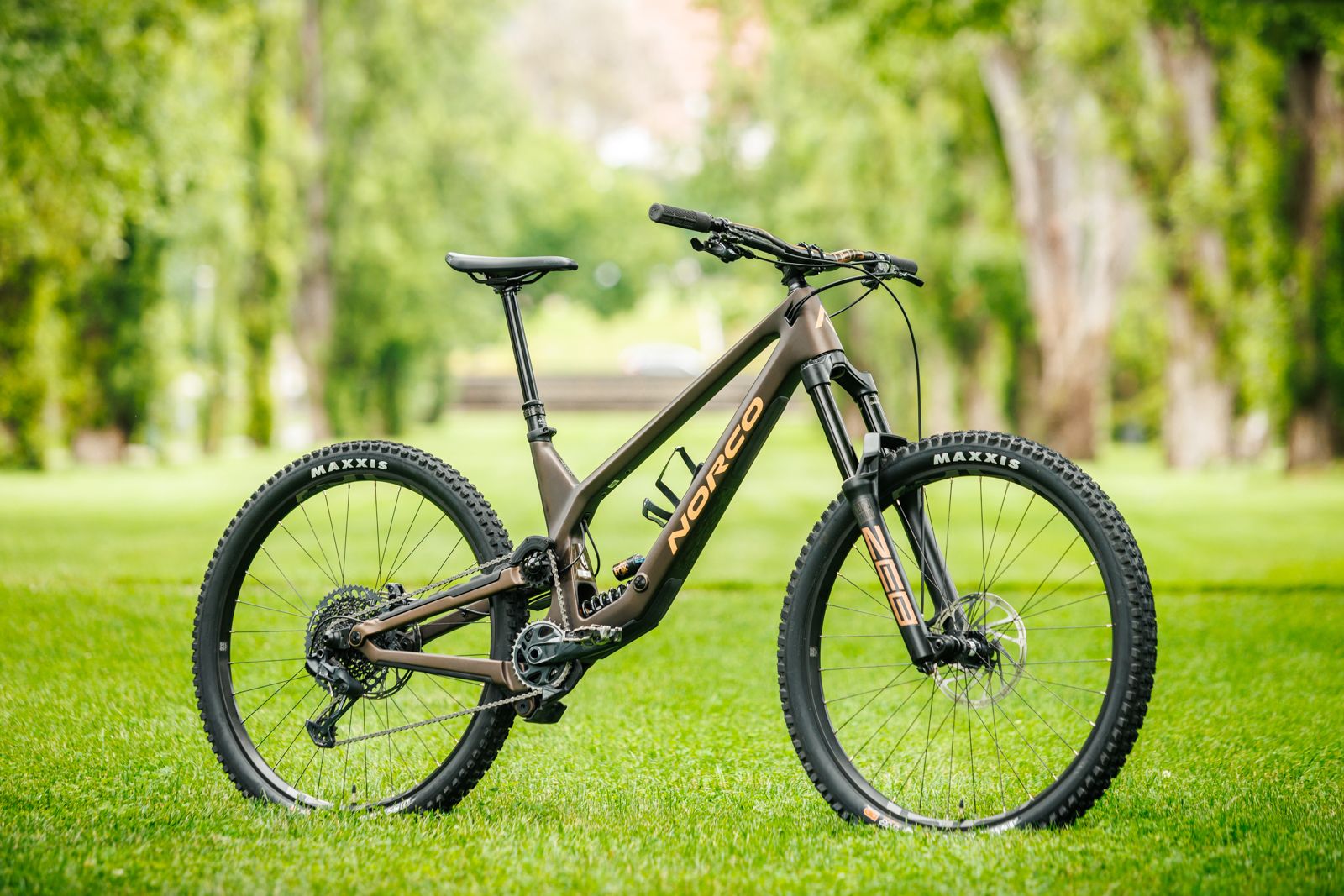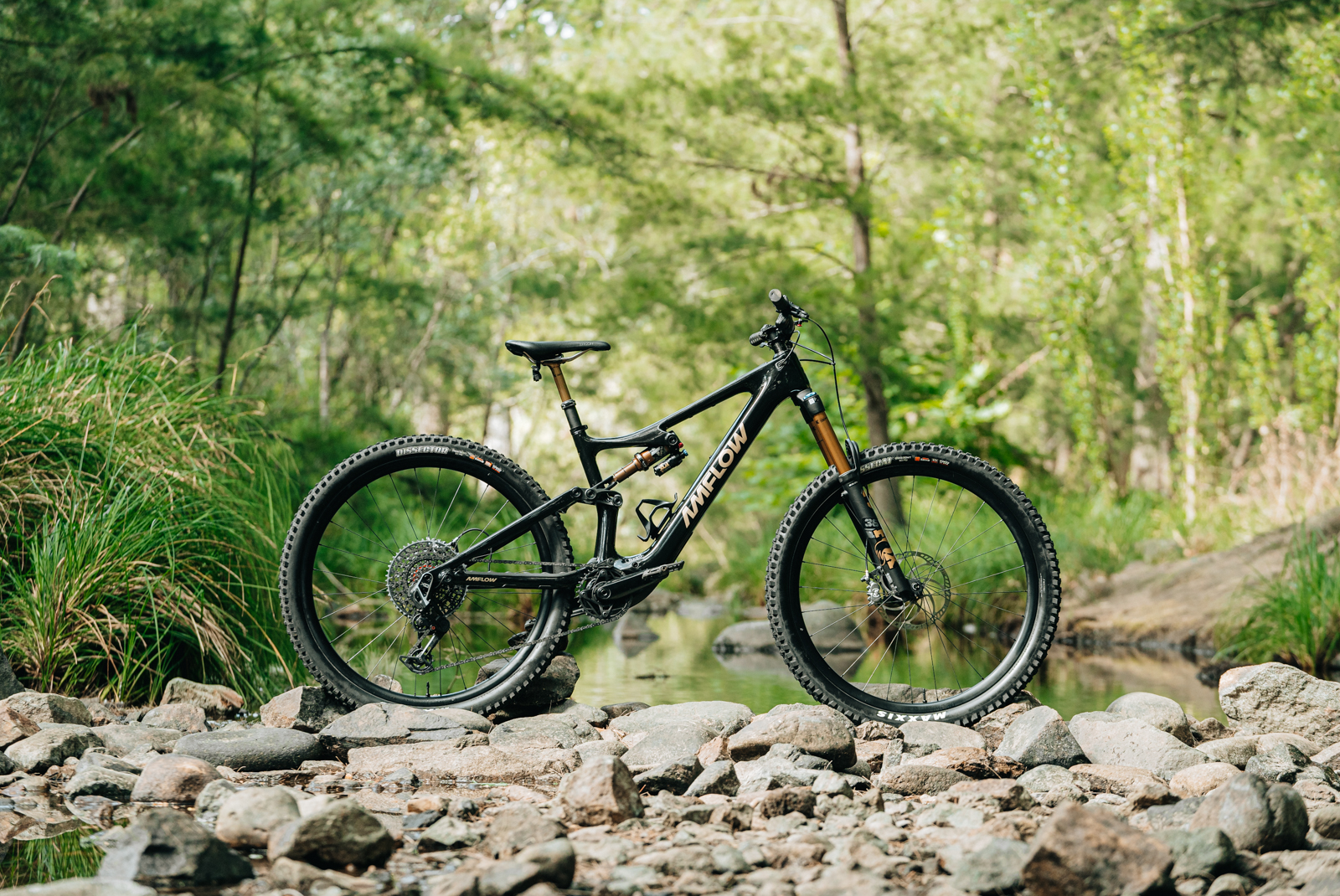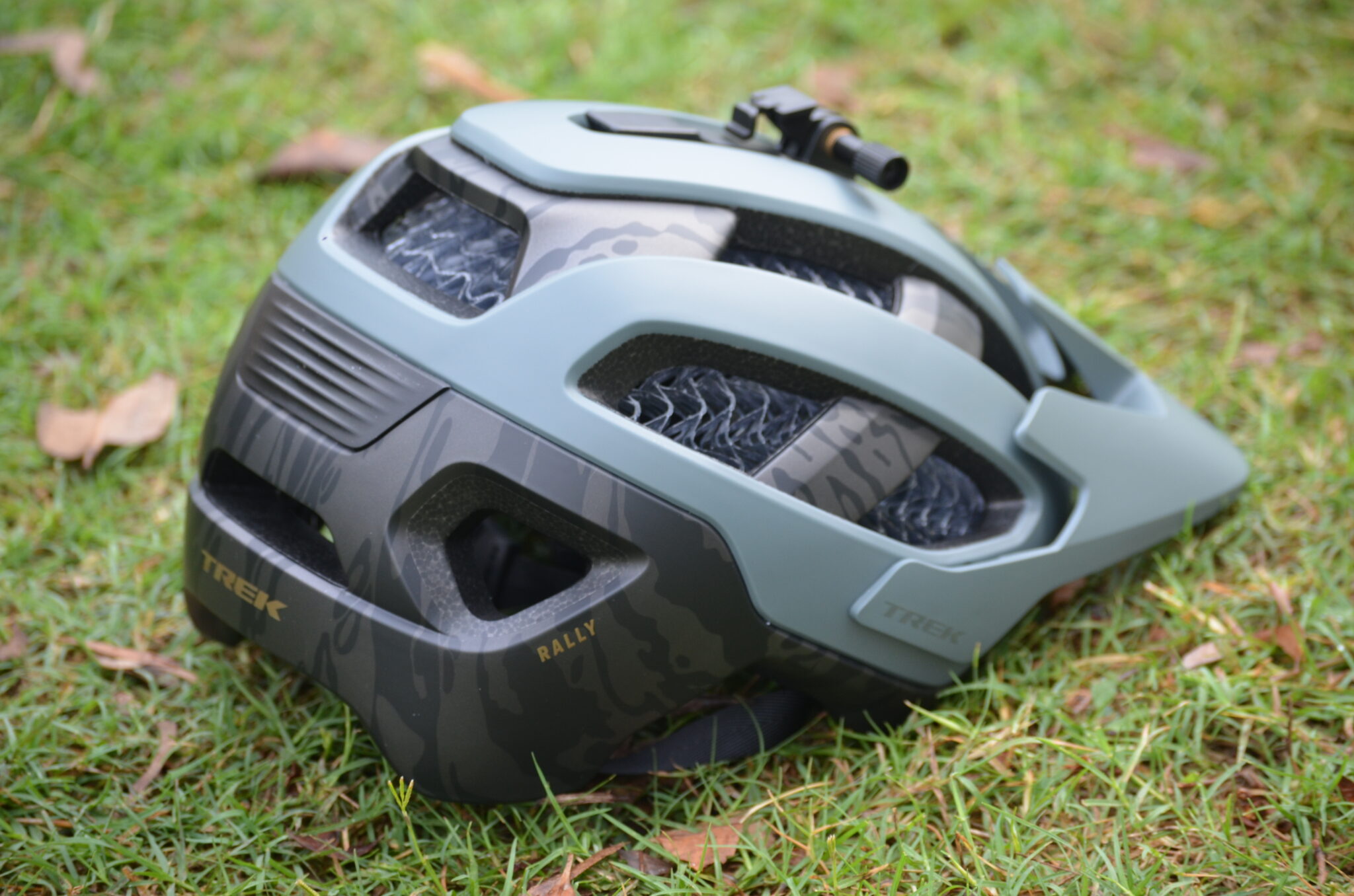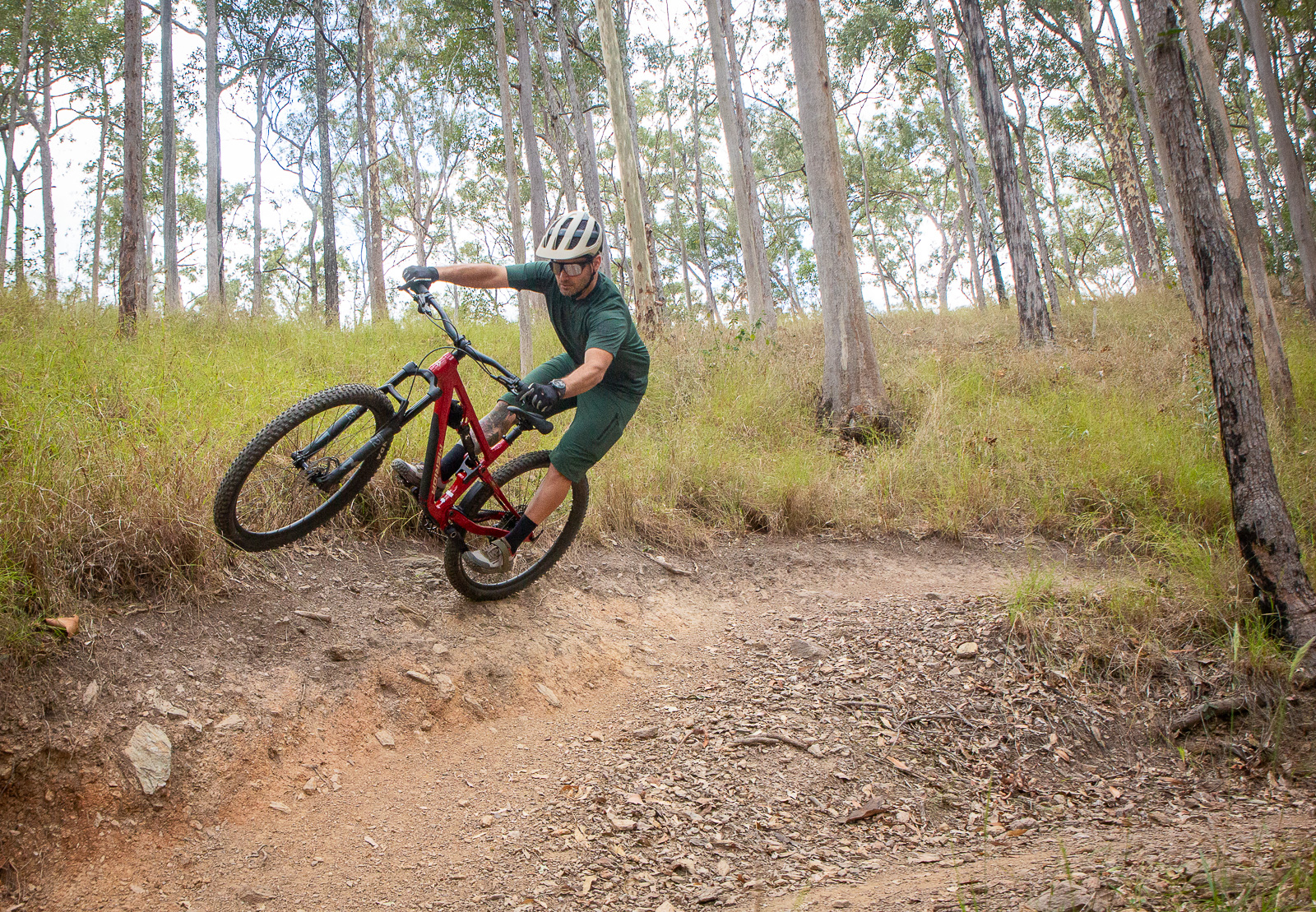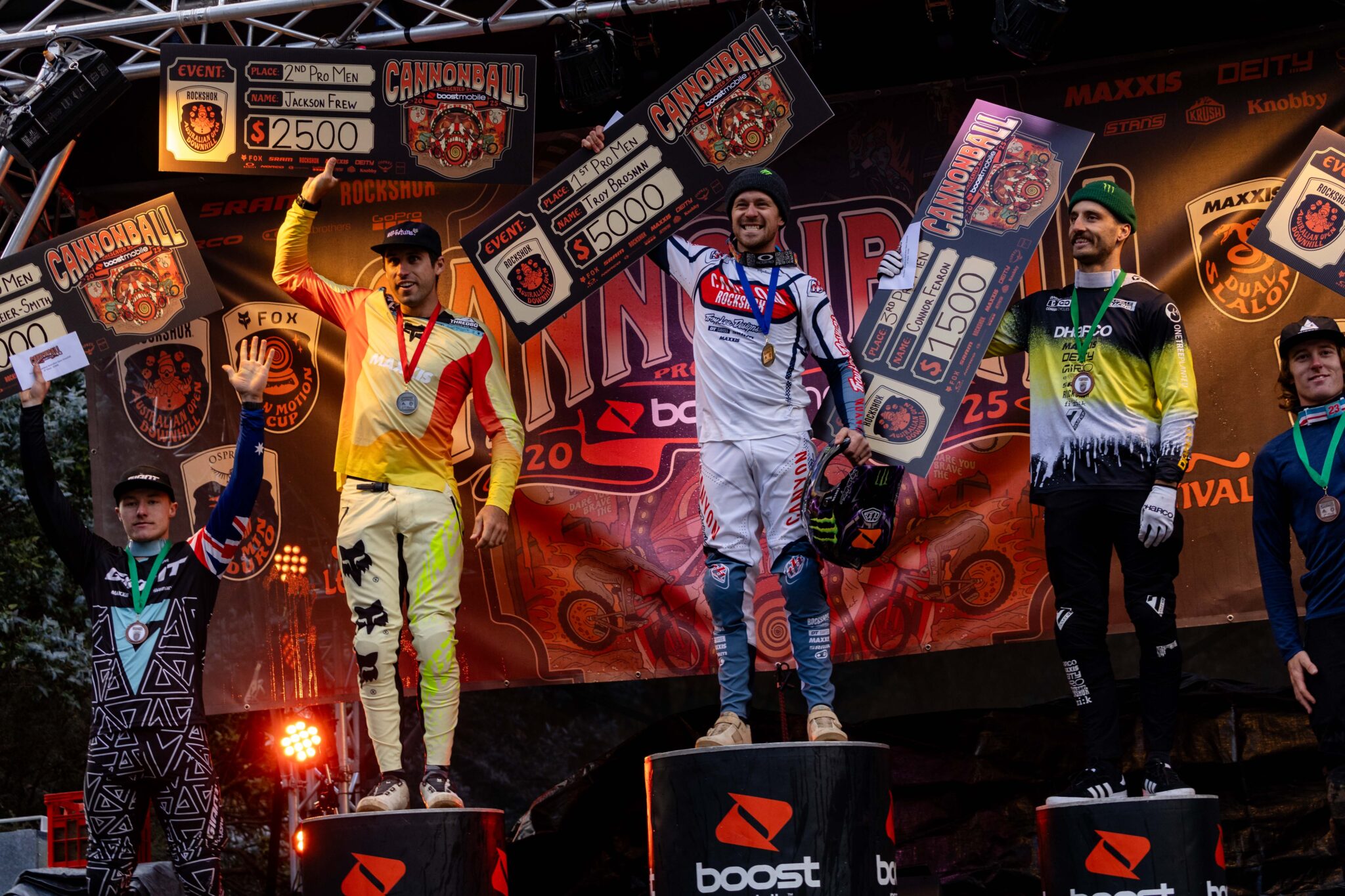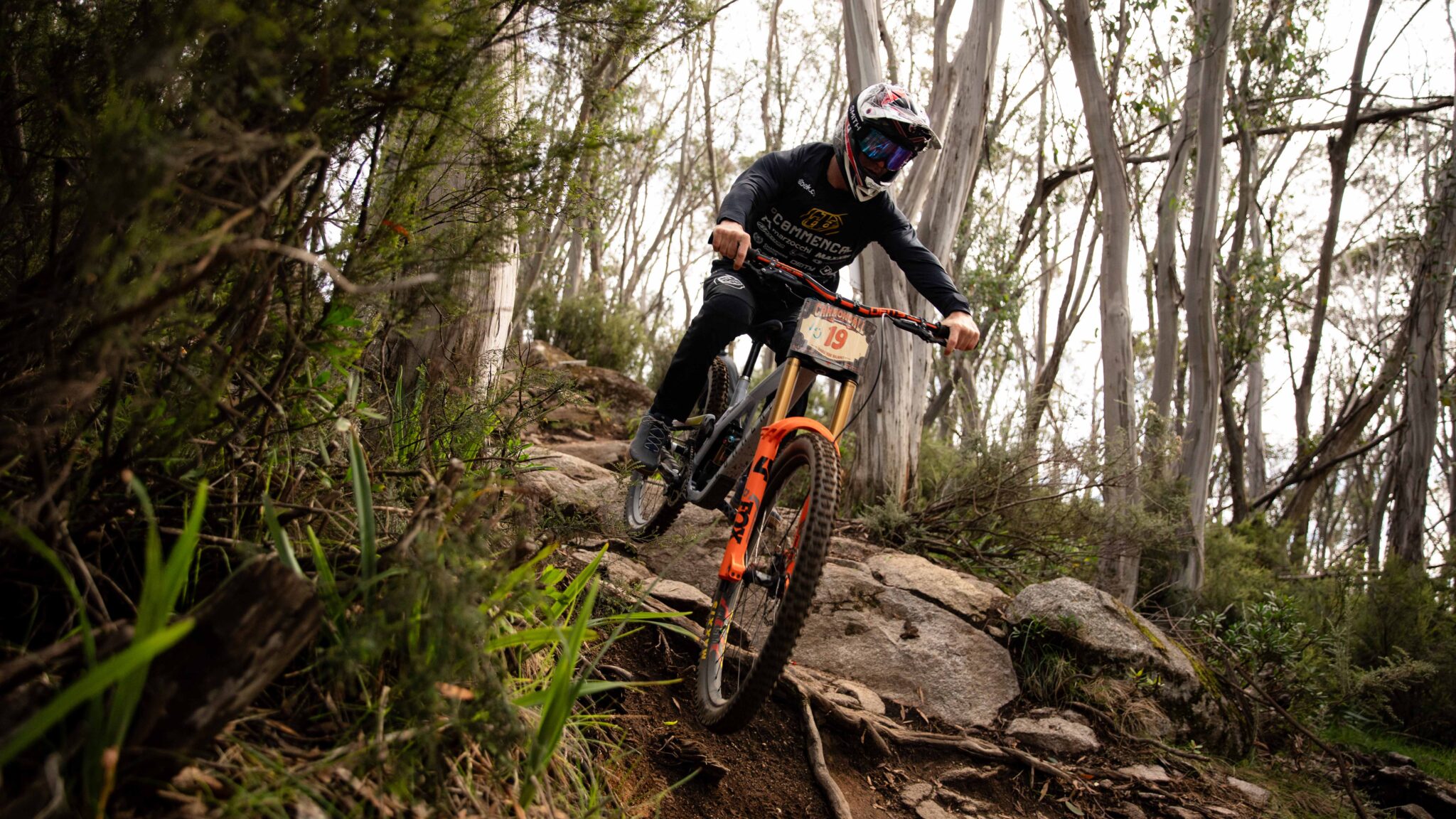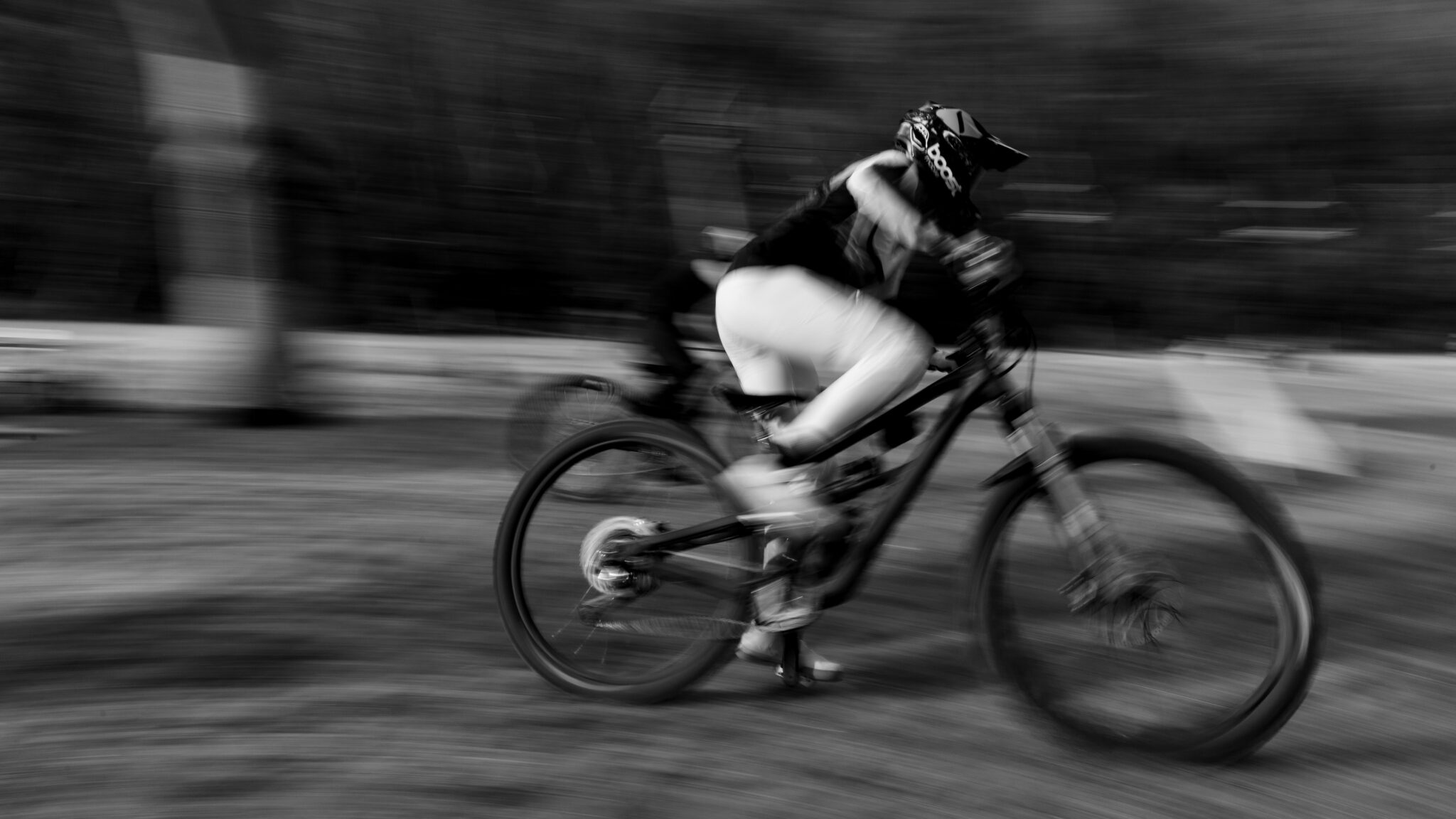TESTED: Norco Range C2
The Norco Range previously earnt the nickname as the Whistler XC bike, and the long travel rig has been the last in Norco's hierarchy to get a revamp. It's an iconic model name for the Canadian bike brand, and one that needed to be done right.
Photographer: Nick Waygood
Tester: Ryan Walsch
Norco are making short work of overhaulling their entire mountain bike line up. The popular Fluid FS lead the charge with new geometry and suspension kinematics, and on each bike since the refinements to geometry and suspension have been advanced further. From the Revolver, to the Optic, Sight, Shore and now the Range, Norco have used their Ride Aligned design and fit philosophy to deliver progressive geometry and handling throughout their full-suspension mountain bike line up.
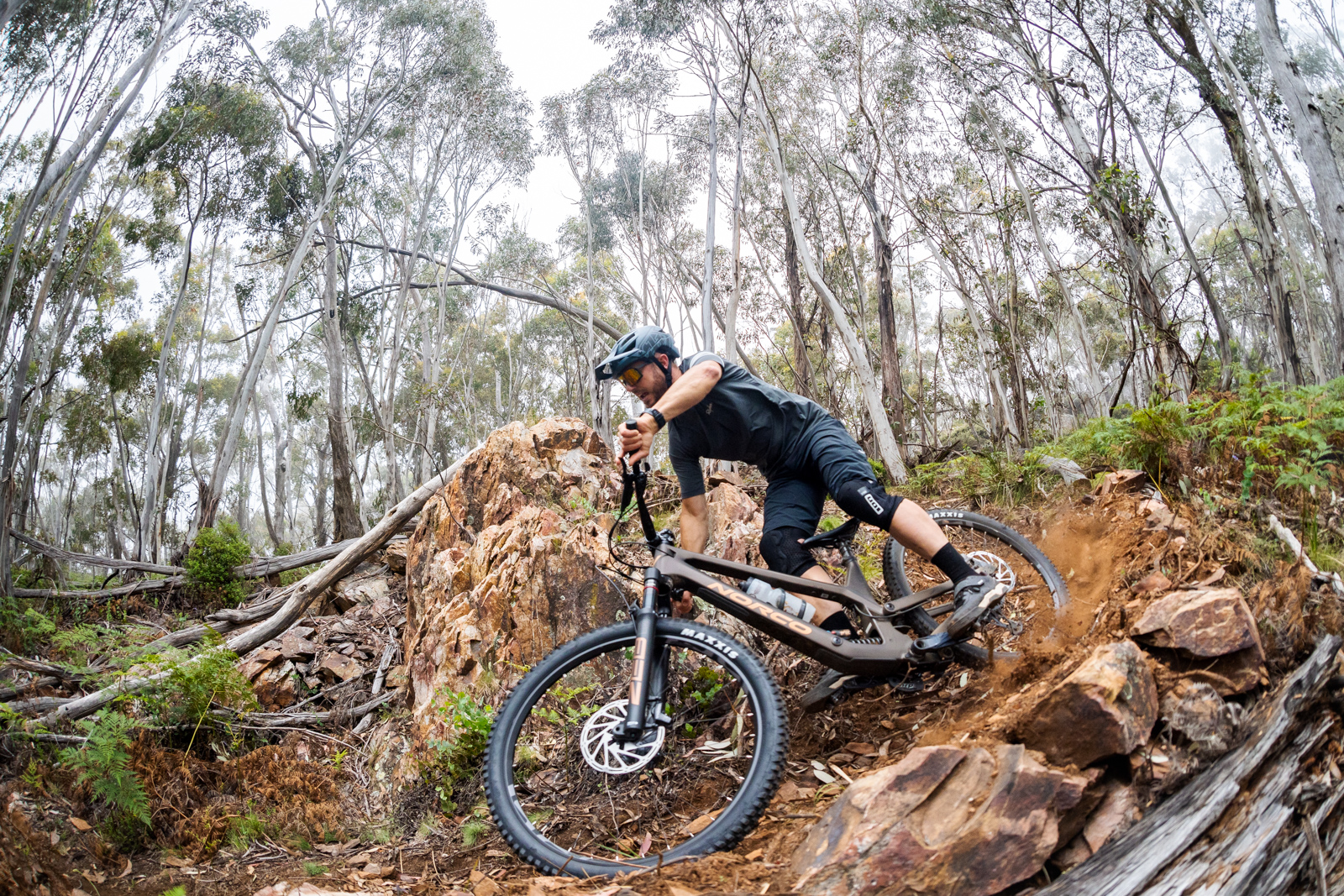
The Norco Range previously earnt the nickname as the Whistler XC bike, and the long travel rig has been the last in Norco's hierarchy to get a revamp. It's an iconic model name for the Canadian bike brand, and one that needed to be done right. All the research into fit, handling and suspension dynamics from the previous models got poured into this new model. The result? A full-carbon, 29” wheeled 170mm travel super bike. The new Norco Range is designed to charge big-mountain lines, rail Enduro races, and tackle laps in the bike park – even with pedal ups.
There are three models in the Norco Range line up, and they all share the same frame and rear shock. Kudos to Norco for speccing big brakes with 200mm rotors on all the models along with metal pads, plus 38mm legged forks, strong tyres and tough wheel builds. These bikes are designed to be ridden very hard, and the parts spec is on point for doing so.
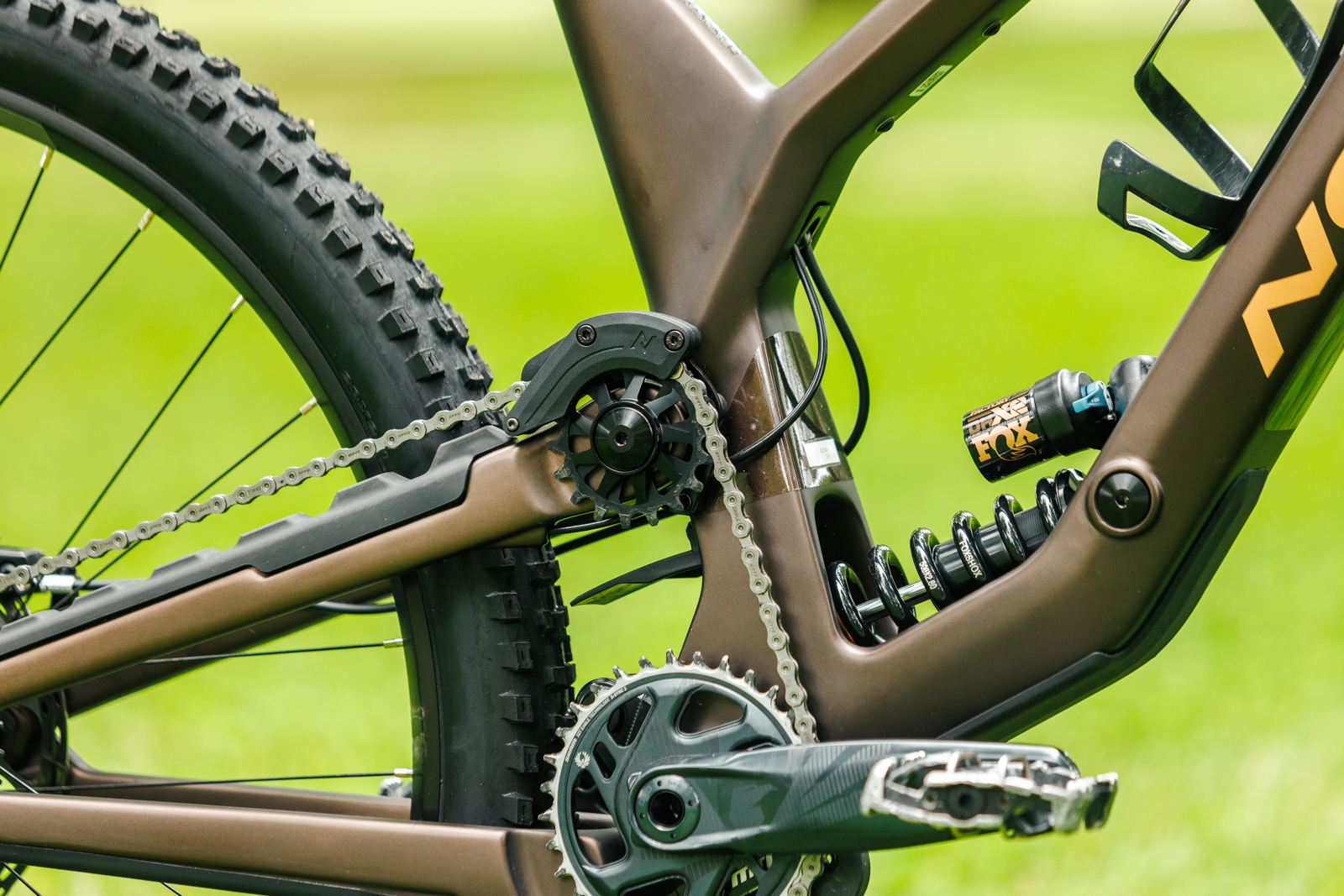
First things first, its another high pivot with an idler but unlike some, the Norco has a virtual linkage driving the rear coil shock. The quality of the idler and its guide are good, working quietly in the stand and on the trail under high loads and soggy conditions. The Range climbs very efficiently for a 170mm front and rear rig which weighs more than it feels like on the trail. The linkage itself is beautifully machined and something you would expect to see on a bespoke offering, almost a shame it's down and nearly out of sight covered with high impact plastic strike plates and dirt.
Hankering for more big bike reviews?
WATCH: Pivot Firebird bike test
WATCH: Trek Slash 9.9 bike test
READ: Forbidden Druid bike test
READ: Norco Sight C2 bike test
This is a virtual high pivot, and yes it does look very similar to the Norco Aurum HSP (High Single Pivot). The pivot point is not fixed which means Norco can have a rearward axle path without the chain tugging on your pedals – or pedal kickback – and still have lower levels of anti-rise, which is how the braking impacts the suspension. The anti-rise is still higher than most bikes at sag keeping the bike planted when braking rather than pitching the rider forward.
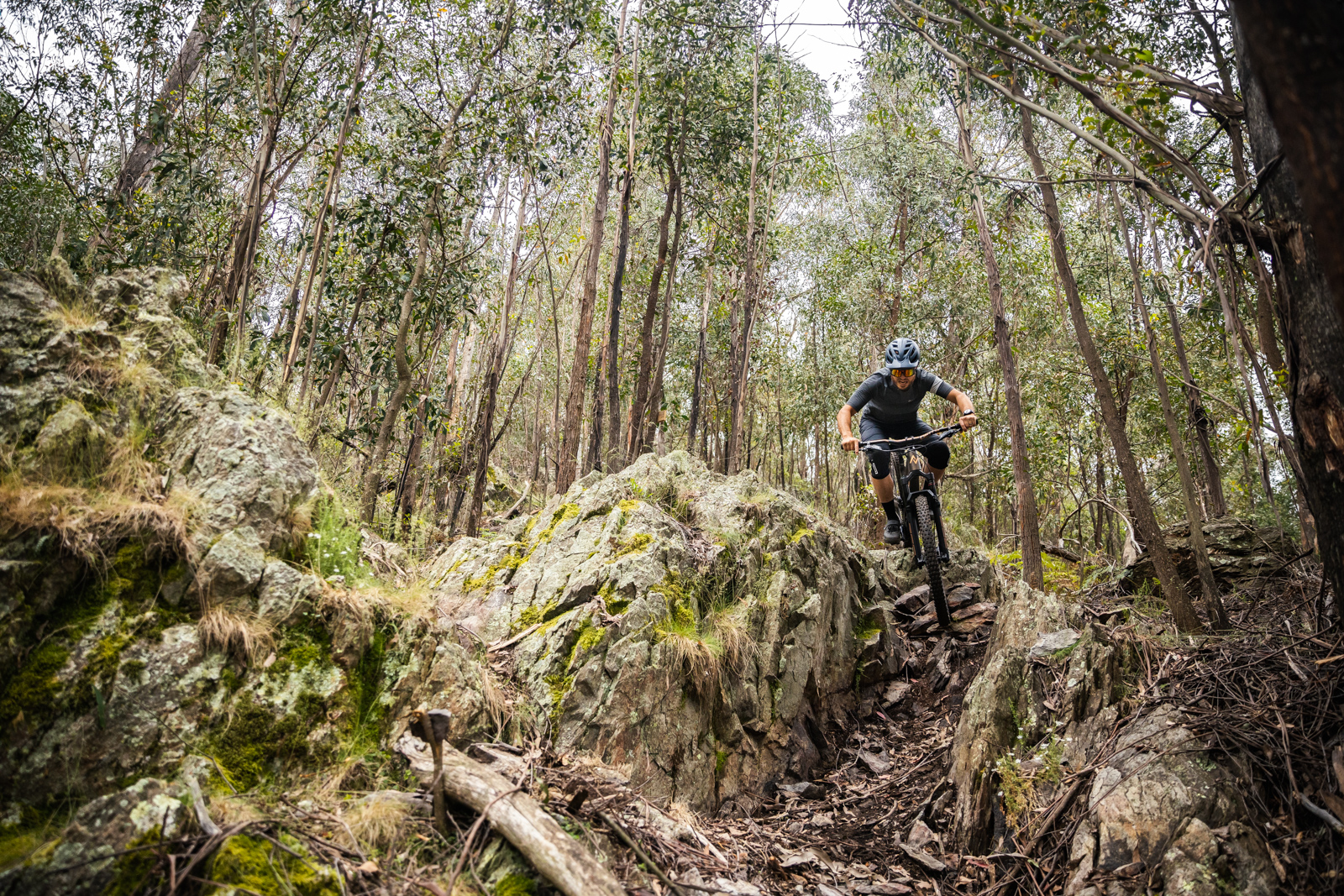
The result is exactly what you want, active suspension on rough terrain, that settles the bike under brakes, and doesn't get hooked up on square edge hits or give lots of pedal kickback making it smooth when riding flat pedals. How active the suspension is under braking is what puts the High Virtual Pivot ahead of the HSP design of the Aurum. The idler is still required to accommodate the chain growth as the rear wheel follows it's rearward axle path, without rotating the cranks backwards (which is the pedal kickback you might feel on other bikes). Each frame size has had its pivot locations specifically designed to match the overall design kinematics, which is no small feat when the rear ends are different on each bike. Like all high pivot bikes, the suspension still does stiffen under braking, but braking aggressively with precision plants the bike firmly onto the ground without pitching the rider forward and gives huge amounts of traction and confidence. This is a big benefit at higher speeds as it creates a very stable stance.
Initial Impressions
Having a soft spot for high pivot bikes for some time now, the new Norco Range looks stunning with its clean lines and low slung chassis. The rear coil shock sits as low as possible through a neatly moulded carbon tunnel situated at the bottom of the seat-tube. Tucked below that is the beautifully machined lower linkage which rotates around the crank spindle and drives the rear shock via a small yoke. The level of quality in the hardware and linkage parallels or exceeds what you would typically see on a boutique frame set, so considering that the complete Range C2 sells for $8999 here in Australia surprises me even more.
The most unique feature people are drawn to is the idler, always the idler! It is an essential component on a high pivot bike and enables the manufacturer to have favorably high percentages of anti-squat and pedaling efficiency with little to no pedal kick back. Pedaling forces and suspension forces move independently to each other and the rider is left with a bike that pedals great and doesn’t want to blow you off the pedals when you’re charging rough and janky trails, especially when you are using flat pedals. The idler is good quality and it ran silently in all the conditions I have inflicted on the Range test bike. Thanks to the quality of the idler, little additional drag can be felt under load.
Norco has designed the Range around a coil rear shock, specifically the Fox Factory DHX2 which gives riders of all three carbon models complete tuning options on this highly capable machine. Tuning the DHX2 has been made as easy as following Norco’s Ride Aligned Setup Guide which includes a recommended spring weight. I first set our Range up following the guide and after some additional pressure in the fork I had it balanced and feeling familiar. I would highly recommend working out what spring weight you will need at the point of sale, in consultation with your Norco dealer.
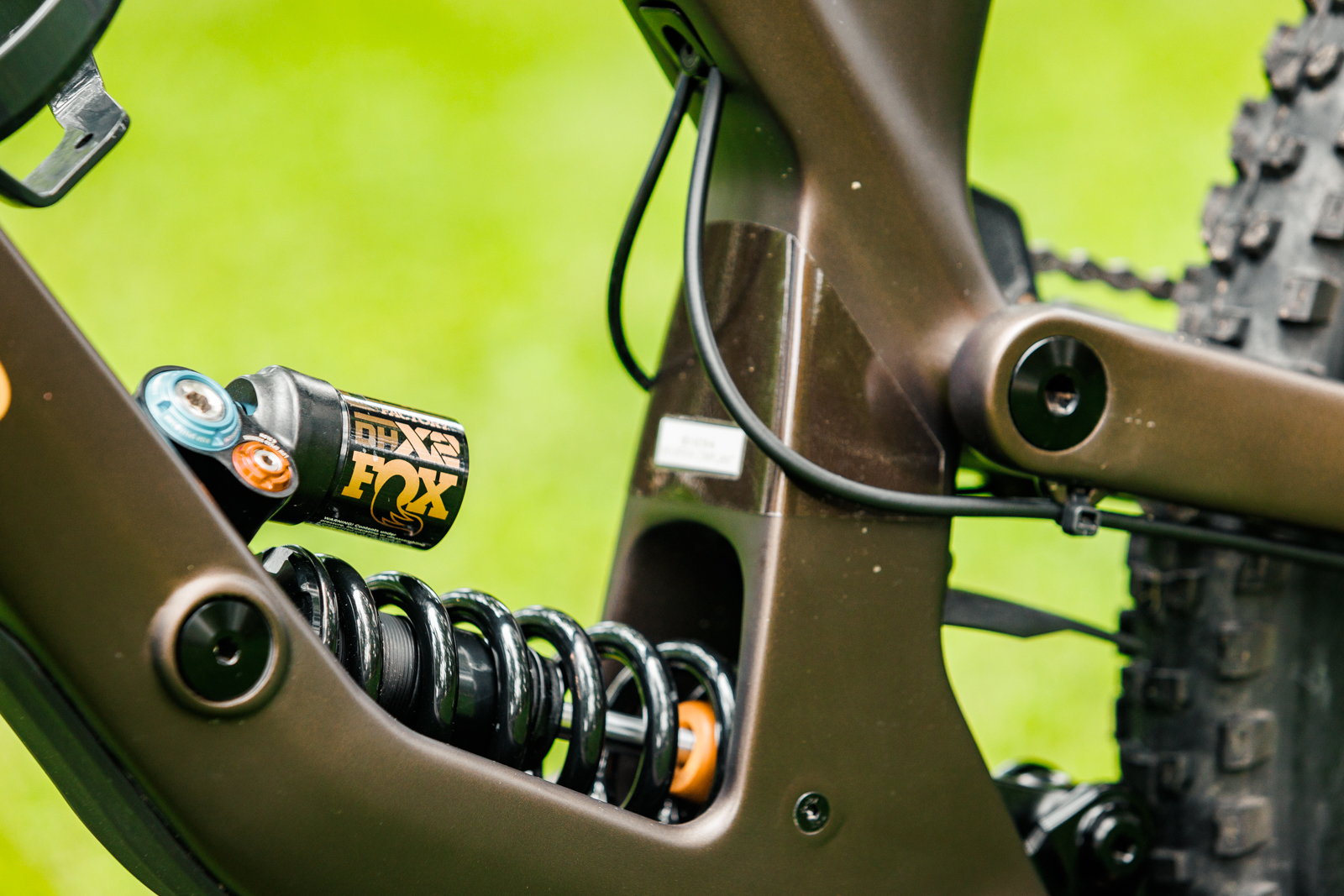
Apart from setting up the Range tubeless, with Stan's NoTubes sealant and valves provided, I ran our Range stock out of the box and very close to Norco’s Ride Aligned Setup Guide. The Range C2 did tip the scales at just over 17.35kgs which makes it one of the heavier hitters I have tested of recent years. That may not be an issue for you, but more on that later.
On The Trail
The fit of all “Ride Aligned” Norco’s such as the new Range is always impressive, the bikes following Ride Aligned design principles put the rider centered on the bike, which leaves you in a really balanced position regardless of your height and bike size. Norco have not only gone to great care to have size specific chain-stays, varying head tube angles and more on each frame size to retain the ride characteristics they set out to achieve.
I mentioned earlier that the Range is overbuilt and hefty and the last thing you would want to point up a hill looking at paper. But thanks to its balanced layout and steep 77 degree effective seat angle on the large, the rider is sitting firmly over the bottom bracket shell in a very comfortable position making long and arduous climbs quite pleasant. Flick the Fox DHX2’s climb lever and it sits higher in the travel and has minimal excessive bob. For a 170mm travel bike from the long, low, slack pattern that is equipped with a coil, it's really impressive how easily it goes uphill with a rider flailing on the pedals. Sure it could be lighter, but the anti squat values and kinematic characteristics make it feel much less of a beast going up and Norco should be commended in how they have pulled that off! Of course, if you're interested in the Norco Range, the ability to pedal up is good, but this bike is all about working with gravity, not against it.
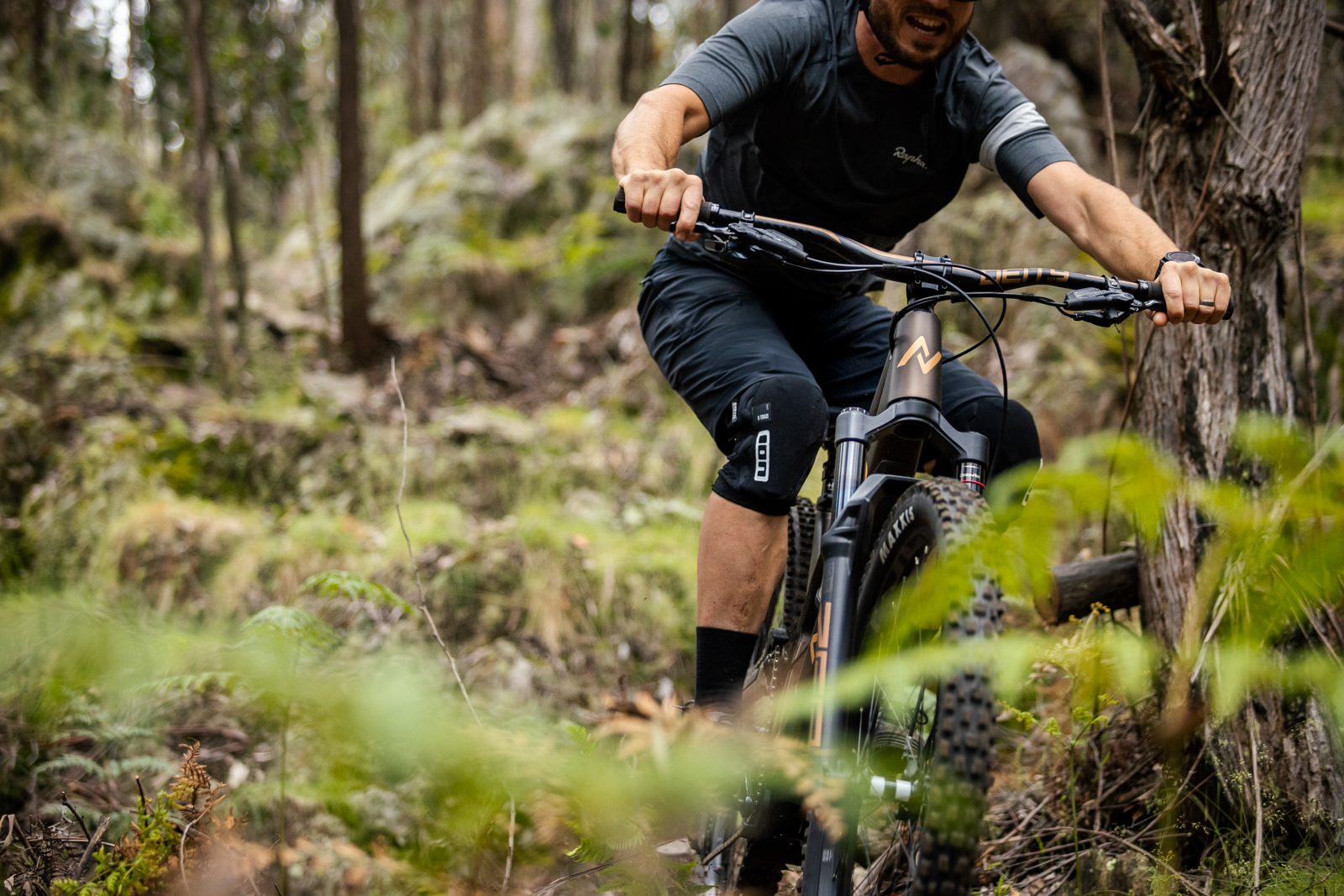
Once you're at the top of your mountain, thoughts like 'what can I send this thing off' will be frequent, the suspension is dialed and all touch points bang on out of the box, with nothing to get used to at all I could just let it go. Knowing that you have pedalled this thing up a mountain fairly easily and can then charge the most demanding trails and features without the bike breaking a sweat is something else. the Norco Range’s rear wheel moves back and out of the way of obstacles flattening out the chop and sticks to the ground perfectly with out feeling boat like or dead in the mid-stroke. The RockShox ZEB and it's chunky 38mm legged chassis up front keeps everything in check, with the huge frame and hardware ensuring the bike never has any sense of wiggling or squirming off your line.
In addition to the Range's rearward axle path, the beautifully balanced geometry and efficient pedalling are two characteristics that are important to dive into a bit further. Some of you may see these as a pro and some a con, but both traits are common with high pivot bikes.
Firstly, applying the rear brake makes the bike squat and stick to the ground. Without being boring, high pivot or in the Range’s case a Virtual High Pivot have high anti-rise values. When under brakes they sit into their travel, gain traction and reduce the feeling of sitting up, becoming light in the back end and pitching the rider over the front causing the fork to dive. While that's a good thing, there is a compromise, which is why not every bike is designed like this. The anti-rise also inhibits the rear suspension's ability to work smoothly and follow the contours of the ground (the Virtual High Pivot does this better that Norco’s High Single Pivot Aurum). This means that applying the rear brake makes the bike sit lower into its travel which leads me to the second point.
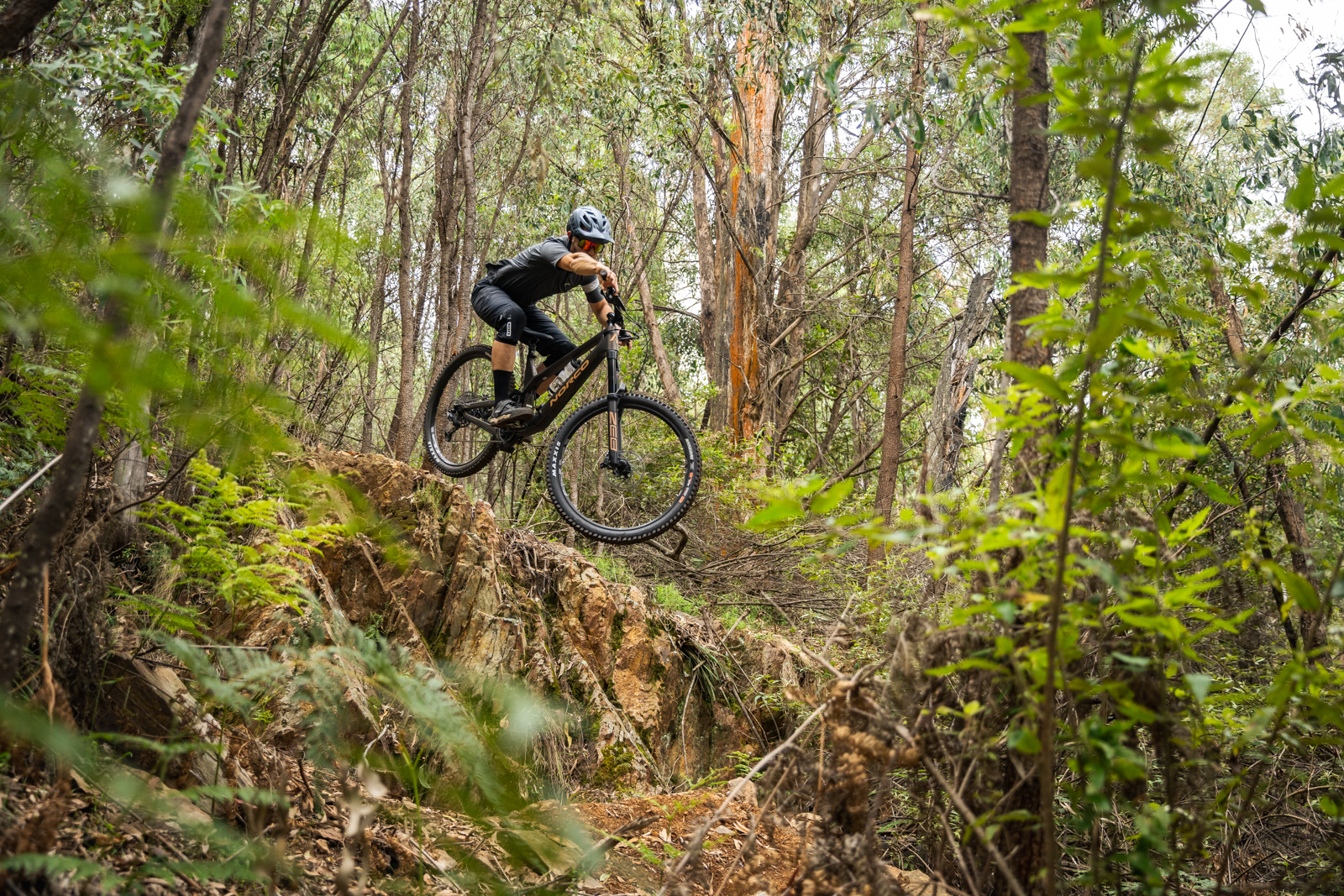
The more travel you use, the longer it gets and the more it sticks to the ground. While this is also another Good Thing for many, there are still reasons why every mountain bike isn't designed like this.
Both of these key ride qualities and key attributes of the Range make it one of the most capable bikes I have ever ridden. The harder you push the Range, the more stable, more composed and faster it goes, it really is that good.
However, in order to make the most of the braking attributes, precise short and hard braking is a must to keep the rear wheel tracking as intended. Brake hard and fast, then release and charge the corner or section of trail, drag the brake slightly to regain traction or composure and repeat. Getting the most out of the lengthening wheelbase is harder than it sounds,you need to let the brakes off and let the bike go, have a good range of motion and work the bike. For example, when you hit a turn hard and compress, the bike is now longer, has more grip than you thought it would and thus wants to straighten up – so what do you do? Shooting out the top of a corner or running wide is not fun, so line selection and tipping it in and committing to the turn with body and bike separation are key to getting the most out of the Range.
While both these are quite different to “a normal bike”, once you get these right the Norco Range is an absolute monster leaving you feeling like you could have gone faster. If the Range is pointing down, there is nothing that most of us will encounter where you need to be concerned about the bike's abilities. From tight tech, to high speed rock gardens and jumps alike the Norco Range is capable and eager. The bike can handle it.
So what holds it back? If you're not Bryn Atkinson or Lew Buchanan, for most of us it will be the rider. Personally, I would have loved to see 220mm rotors on at least the front of this big freight train of speed, but the spec and price point are exceptional already, that aside a set of SRAM Code RSCs and big rotors would at least ease my mind on the steeps, it feels like you are constantly trying to wash off speed on the Range, it doesn’t get hooked up on much and finds speed just about anywhere that has a downward trend.
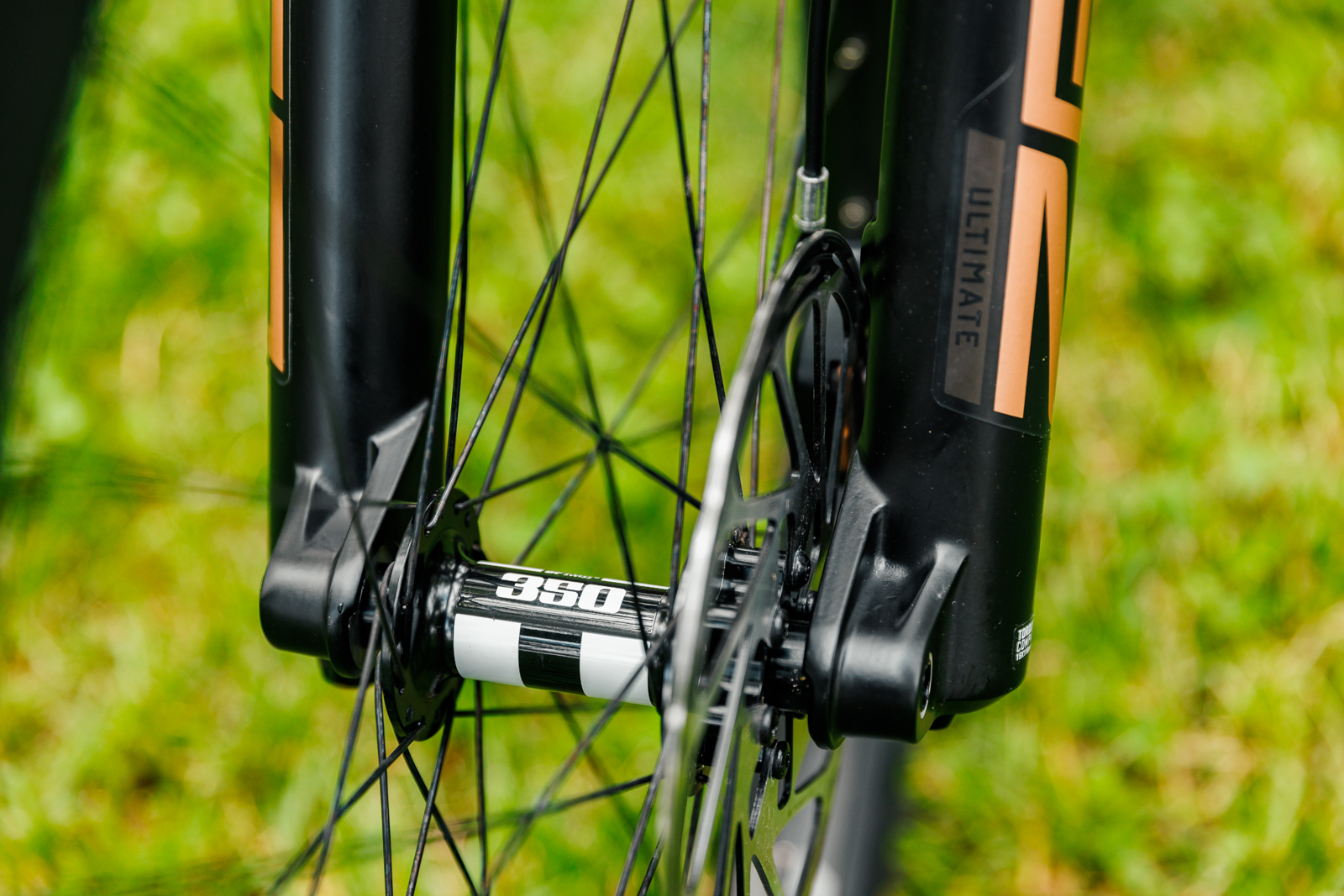
The stock wheels are adequate. I mean no disrespect to the ever popular DT Swiss 350 hubs and the E-Thirteen LG1 alloy rims they are laced to, but they just cant keep up to the demands of a long travel and highly capable 29er. I experienced quite a few dings to both front and rear rims (mainly the rear, not surprisingly) and despite the Maxxis DD tyres and higher than normal pressures, the Range does not complain about anything on the trail, but after a run you look down and see dents on your rims. Something along the lines of a We Are One Strife or similar carbon DH specific rim would highlight the Range’s disregard for rough trails and allow racers to go as fast as they can.
Our Take
If you are looking for a bike to go fast, let the brakes run and want to ride the steepest, roughest trails then here it is, the Norco Range is perfect. If you want to cruise at the bike park, a caged Range may be a bit of a handful at times.
As much as I love the new Norco Range, dare I say its too much bike for me and unless I lived somewhere with steeper trails, its just too capable if that’s even a thing. Even the gnarliest steeps around Canberra and beyond didn’t unsettle the Range, proving Norco have built something unique and exceptional to ride. Given Norco aimed to build a bike for the Enduro World Series riders, and a bike to tame the wild lines in the Canadian backcountry – they have succeeded. But it is up to you to judge whether that's the capability that you need.
Full Parts Specification
Available Sizes: S, M, L (tested), XL
Frame Material: Carbon fiber
Fork: RockShox ZEB Ultimate RC2, 170mm, 44mm offset
Shock: Fox DHX2 Factory Coil, custom tune, 500lb spring (L)
RRP: $8999
Shifter: SRAM GX Eagle 12sp
Derailleur: SRAM GX Eagle 12sp
Crank: SRAM GX Eagle, DUB, 170mm, 32t
Bottom bracket: SRAM DUB PF92
Chain: SRAM Eagle 12sp
Cassette: SRAM Eagle XG-1275, 10-52t
Hubs: DT Swiss 350, 6 bolt, Boost, 32h
Spokes: DT Swiss Competition
Rims: e*13 LG1 EN, 32h, 29”
Tyres
F: Maxxis Assegai 2.5” DD, 3C, TR MaxxGrip
R: Maxxis Dissector 2.4' WT DD, 3C, TR MaxxGrip
Brakes: SRAM Code R 4-piston, 200mm/200mm
Stem: CNC Alloy, 40mm, 35mm clamp
Handlebars: Deity Ridgeline 800mm, 25mm rise, 35mm clamp
Seatpost: Tranz-X YSP-105 adjustable, 34.9mm, 200mm drop (L, XL)
Saddle: Ergon SM10 Enduro

